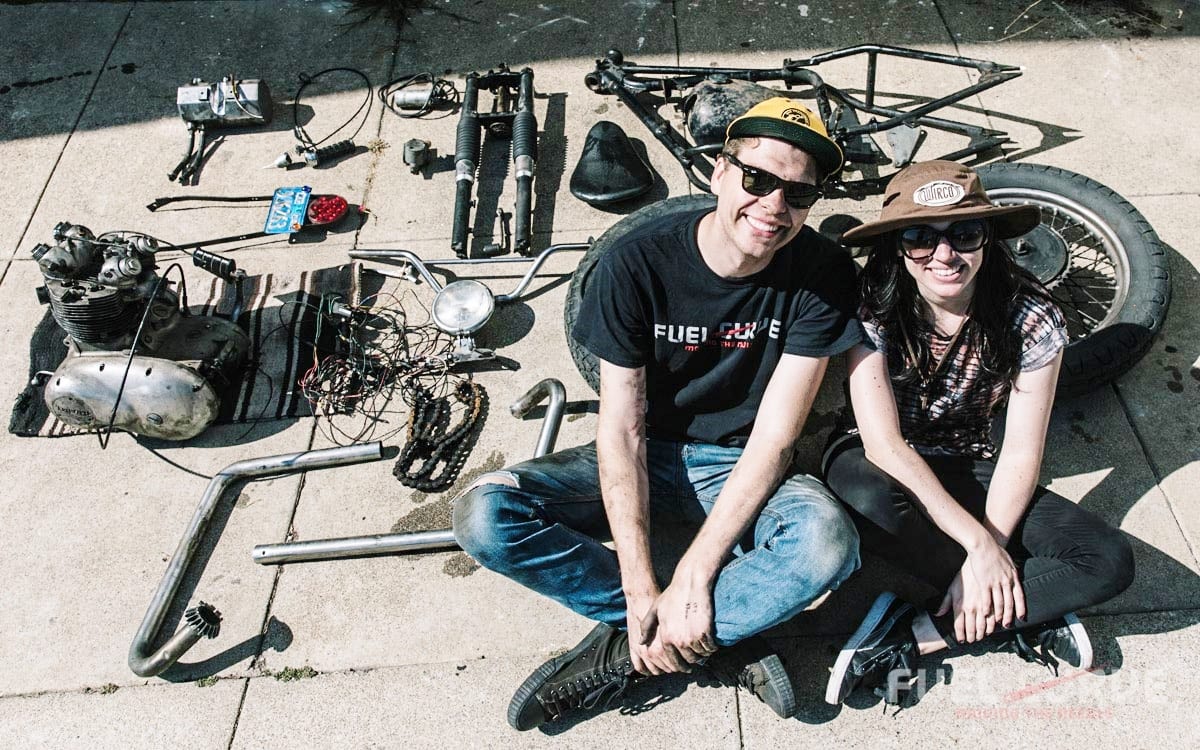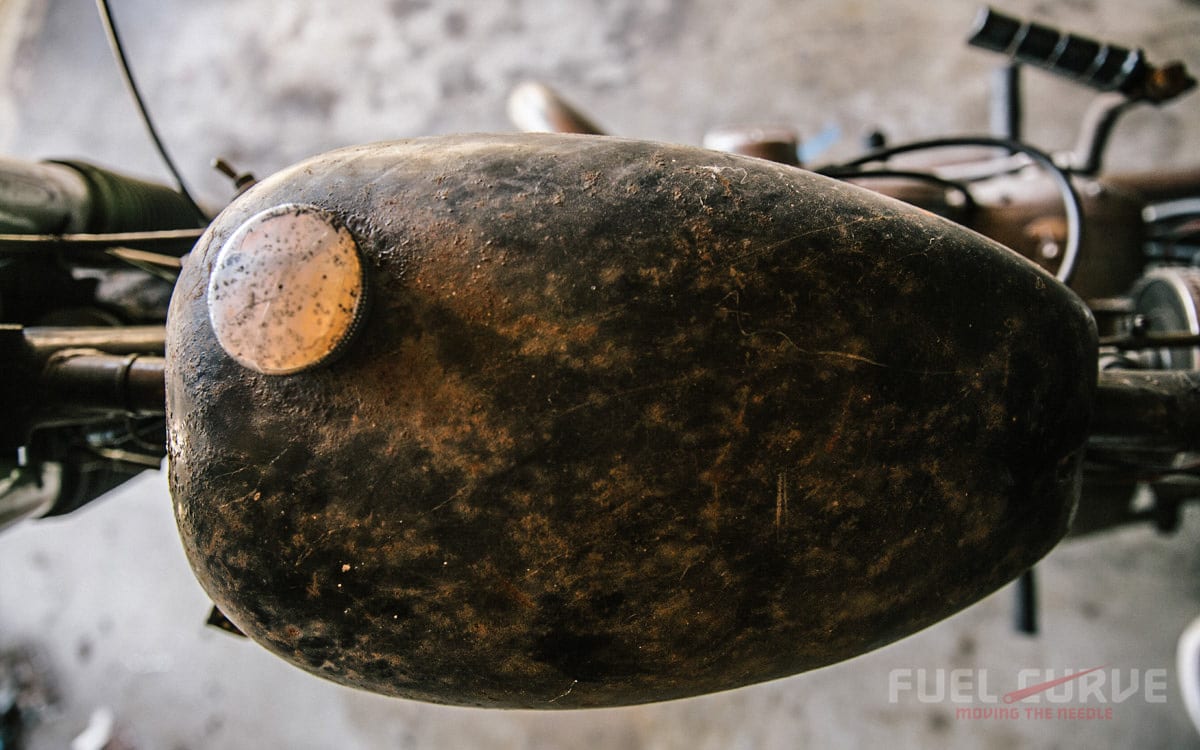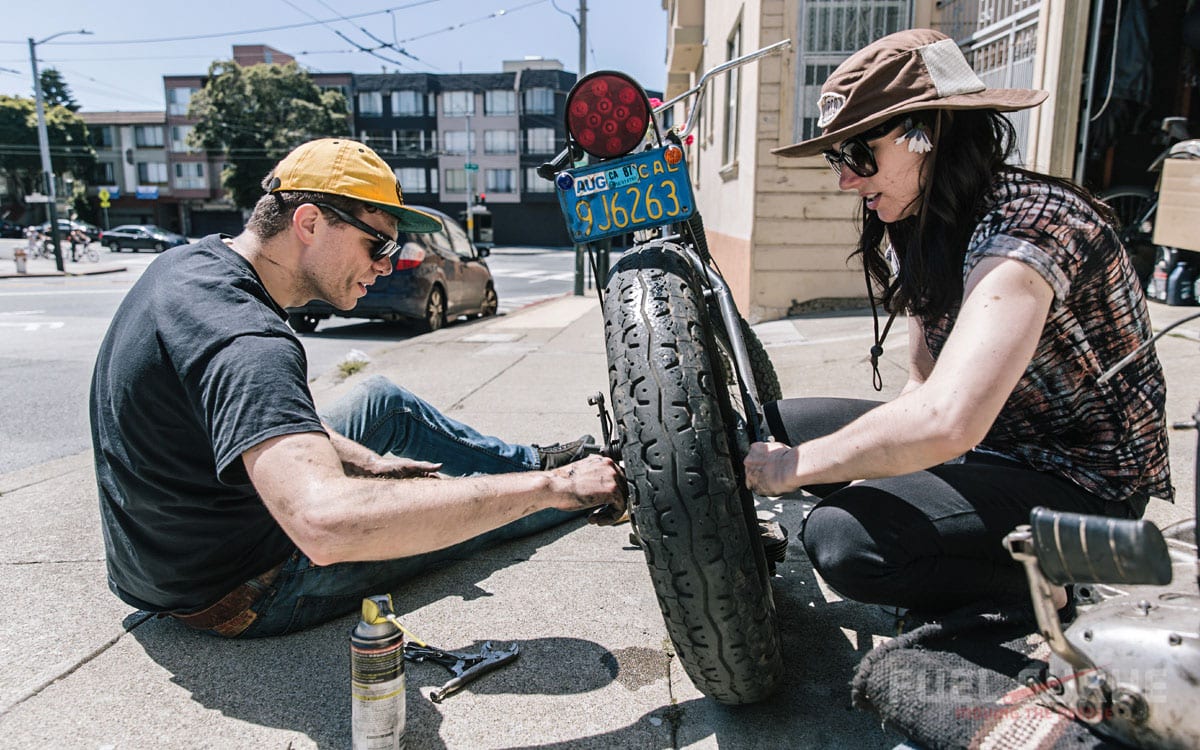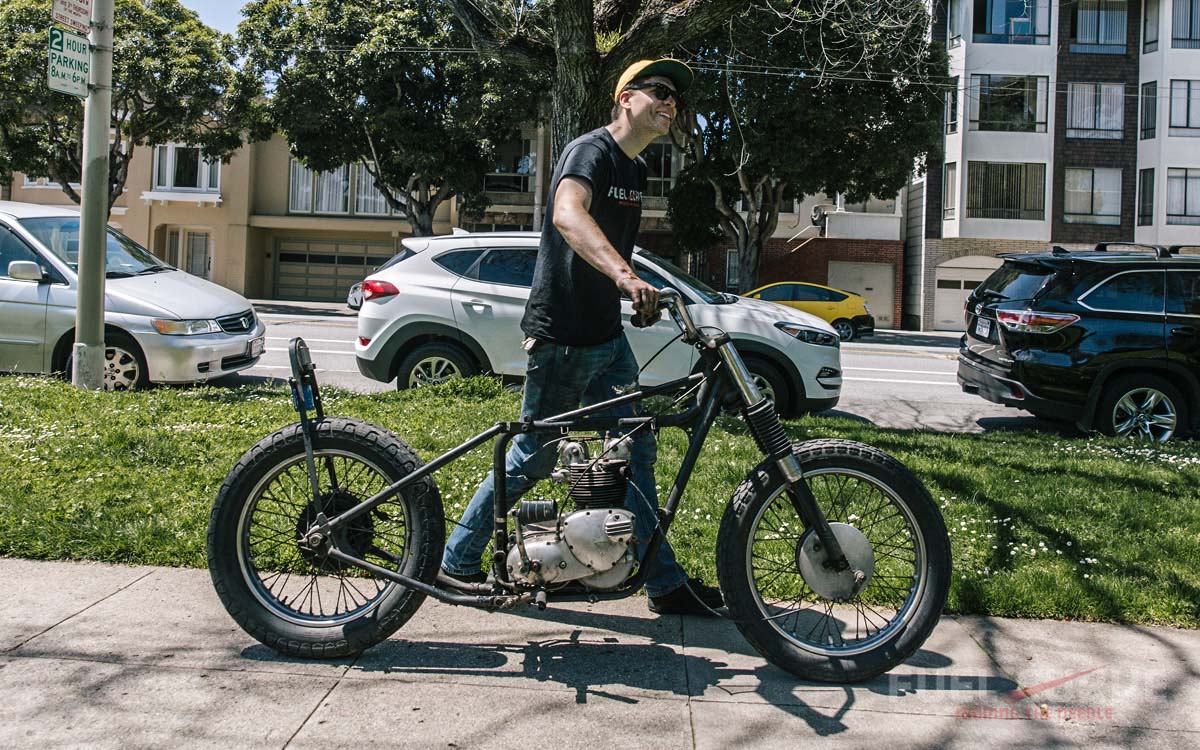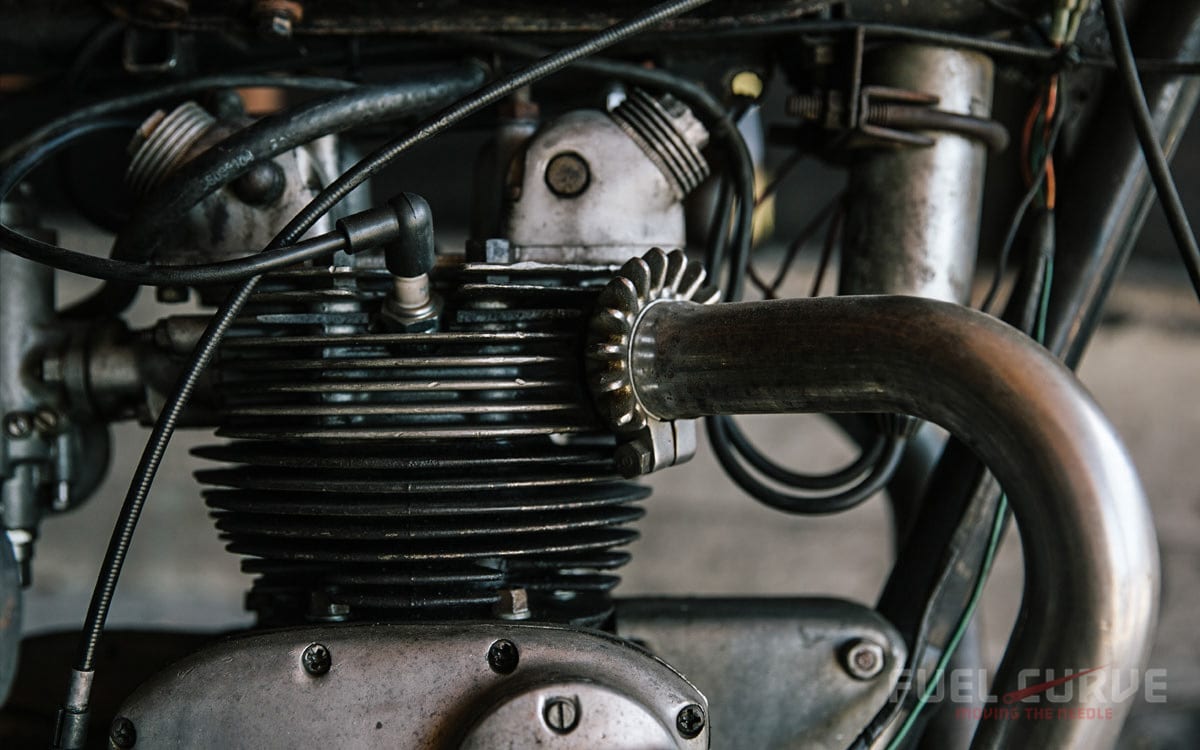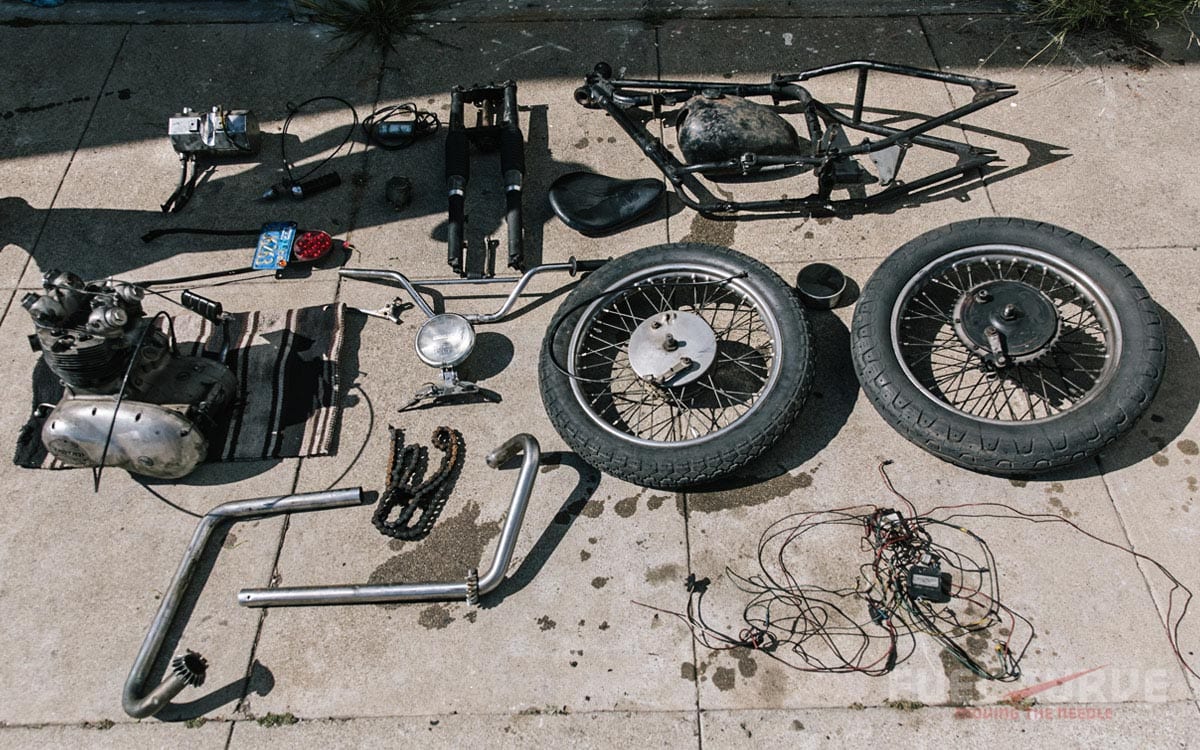Deconstruction of a Chopper: Tearing Down a 1966 Triumph T100C
On a recent sunny Saturday, I turned my running 1966 Triumph T100C into a pile of parts. Good idea, right? I’m not solely to blame here—I got by with a little help from my friends. The story starts long before I was old enough to drive, let alone ride a motorcycle. Back in the late 90s, The Rodder’s Journal published a piece titled “Ride ’Em, Wreck ’Em, Never Check ’Em: Deconstruction of a Coupe” in issue #17. It wasn’t just a car feature or a historical article: it focused on Pete Eastwood and his crew dismantling his ’32 Ford three-window coupe in the back of Pete & Jake’s old shop in Temple City, California, 20-something years prior. They started the day with a functional hot rod and ended up with a bunch of pieces—and everyone had fun in the process.

Ever since I read that article, I’ve wanted to do something similar. There’s one major problem: I don’t own an early Ford hot rod (and even if I did, I’d do my best to keep it together so I wouldn’t have to barter for another parking space in front of my San Francisco apartment). “No car, no problem,” I thought. “Let’s tear down a motorcycle.” Months before ripping into the 1966 Triumph T100C you see here, my longtime pal Haley Ferrario and I did a trial run with a barn-fresh 1970 Honda CL350. We had plans of time-lapse videos and nicely lit feature photography, but greasy hands and dead GoPro batteries led to less than perfect results. Alas, I called upon my friend Michael Enos to document the disassembly this time around. He was more than happy to capture the action as it unfolded.
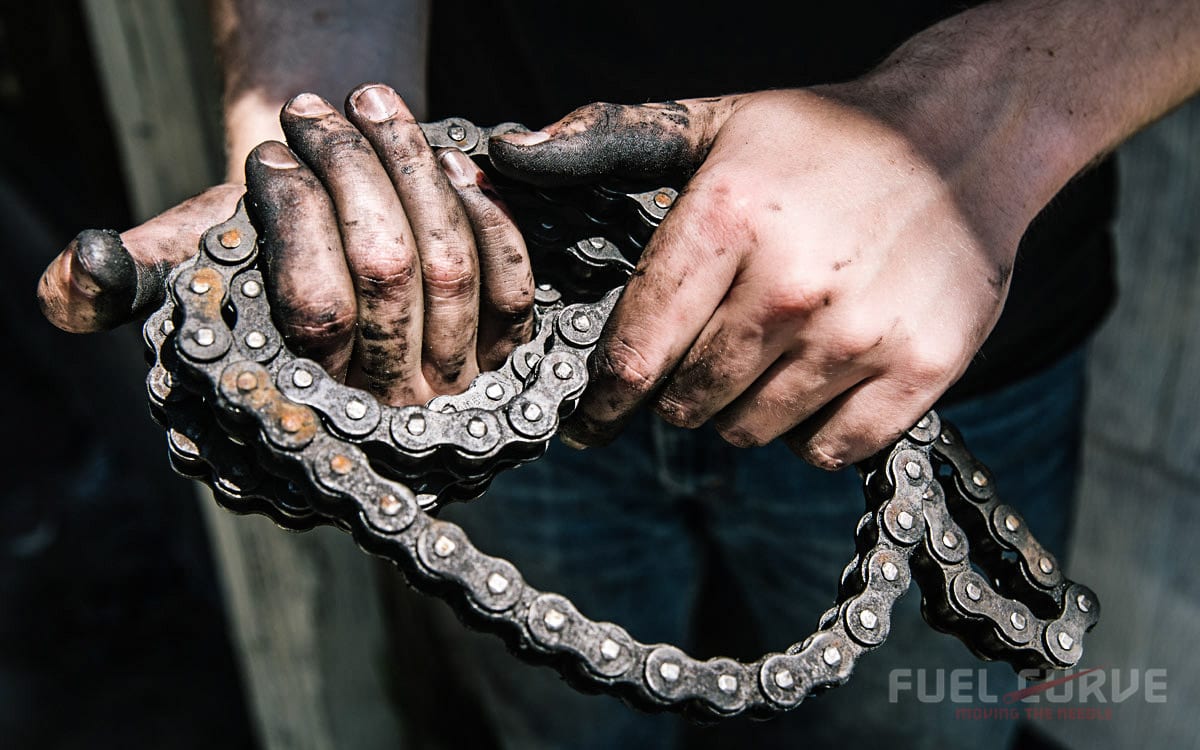
The Arkansas Traveler
Before we get to that, let’s take a moment to talk about the bike. Our subject here is a 1966 Triumph T100C, the competition model of the brand’s famed Tiger series. Unlike its street-focused brethren, the C’s were equipped with folding foot pegs and Scrambler-style exhaust—both useful features when the conditions got rough.
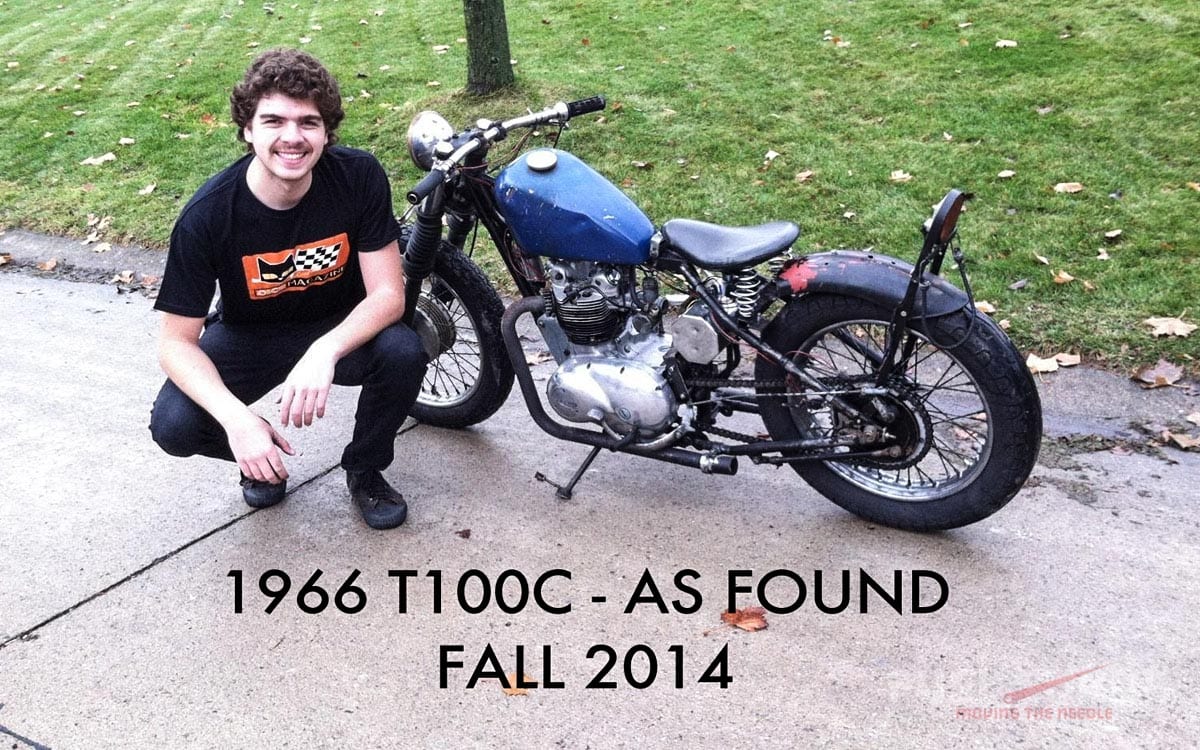
Unfortunately, when I found this particular Tiger on Craigslist in Missouri in the fall of 2014, the telltale signs of the bike’s off road pedigree had all but been erased when the previous owner chopped it in Arkansas decades earlier. The welds were crude, the wiring was a total mess and it wasn’t long before it earned the nickname “Spaghetti Western.” None of that really mattered: it was a 1960s Triumph located less than 200 miles away and it (sort of) ran. How could I pass that up? I scooped it up with grand visions of transforming it into a ’60s-style street and show bike.

Throughout my college years, the Triumph shifted between a friend’s house in Missouri and my parents’ place in Michigan. As time passed, I built and rebuilt the bike in my head, playing with everything from front fork length and tank selection to sissy bar height. And with that, my stockpile of parts grew. Projects came, projects went and the old T100 stayed in the back of my mind, even though it was more than 2,000 miles away. By early 2018, I had sold my CL350 and cleared a space in my garage; I knew the time was right to finally set the wheels in motion.
The Teardown
Once I confirmed that it could indeed run on California’s pump gas, I called up my friends and prepared for the teardown. That Saturday morning, we rolled the bike out into the driveway and immediately go to work. We drained the fluids, removed the big pieces like the gas tank, oil tank and exhaust pipes—and then things really got moving. In a frenzy of sockets, wire cutters, breaker bars and Liquid Wrench, the bike started looking less and less like a motorcycle.

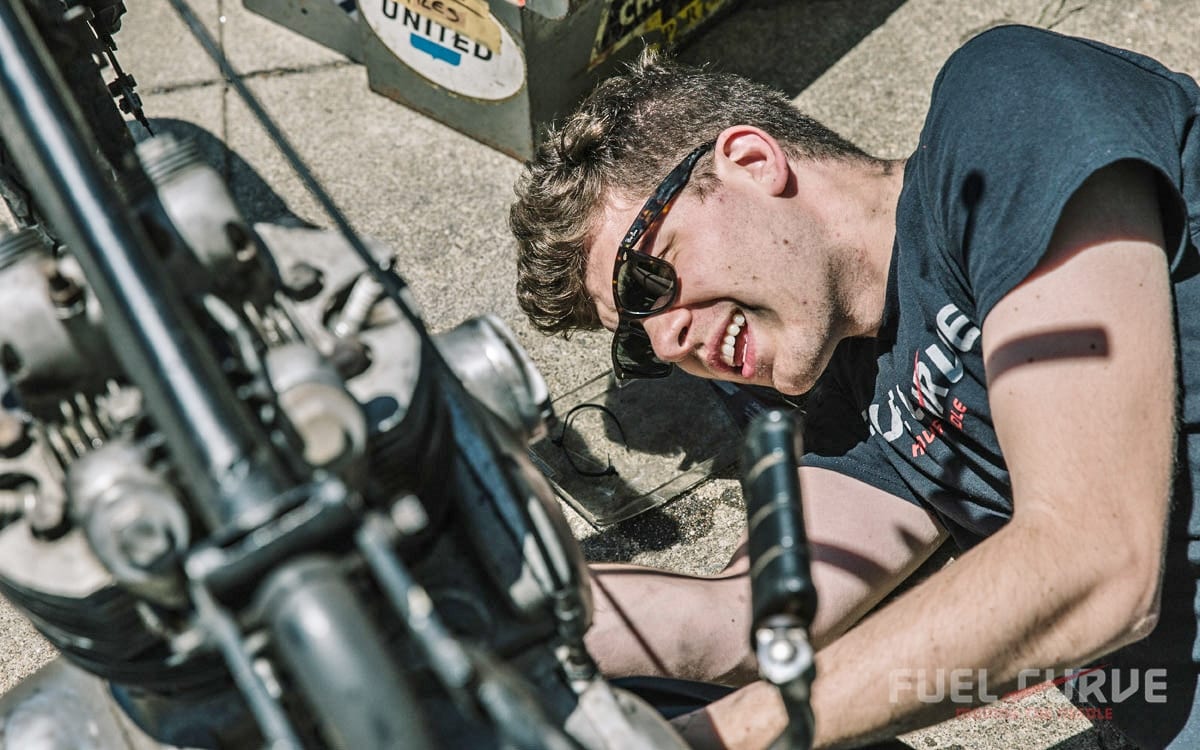

As I’m sure you can surmise, taking on this type of project in San Francisco offers a unique set of challenges. Since we don’t have a blade of grass on our property, we had to get creative when it was time to pull the engine from the frame. We loosened the motor mount bolts, guided the bike down to the nearest park (luckily only a block away from my apartment) and laid it down in the grass. This allowed the motor to “fall” out without cracking any of the delicate fins. With the complete engine on a carpet dolly and the frame now the basis of a very heavy bicycle, Haley and I pushed the project back to the garage as people on their Saturday strolls wondered what the hell was going on. Absurd? You bet. Neither of us could keep a straight face.
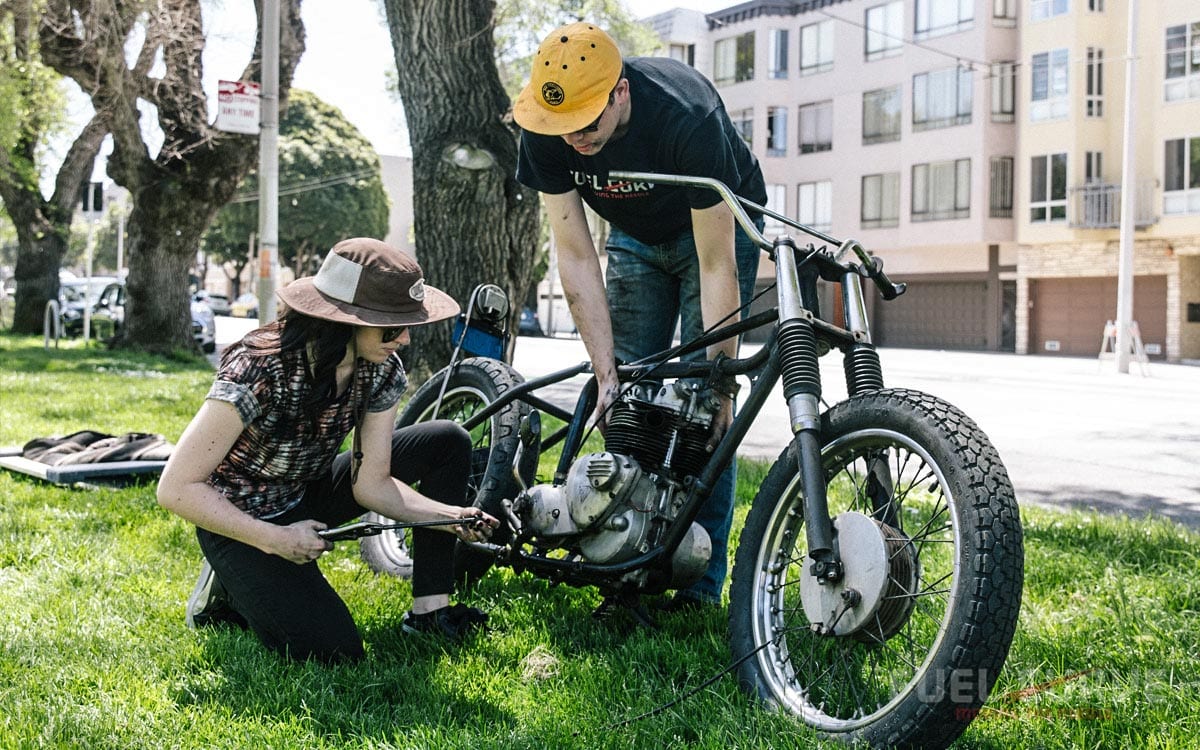
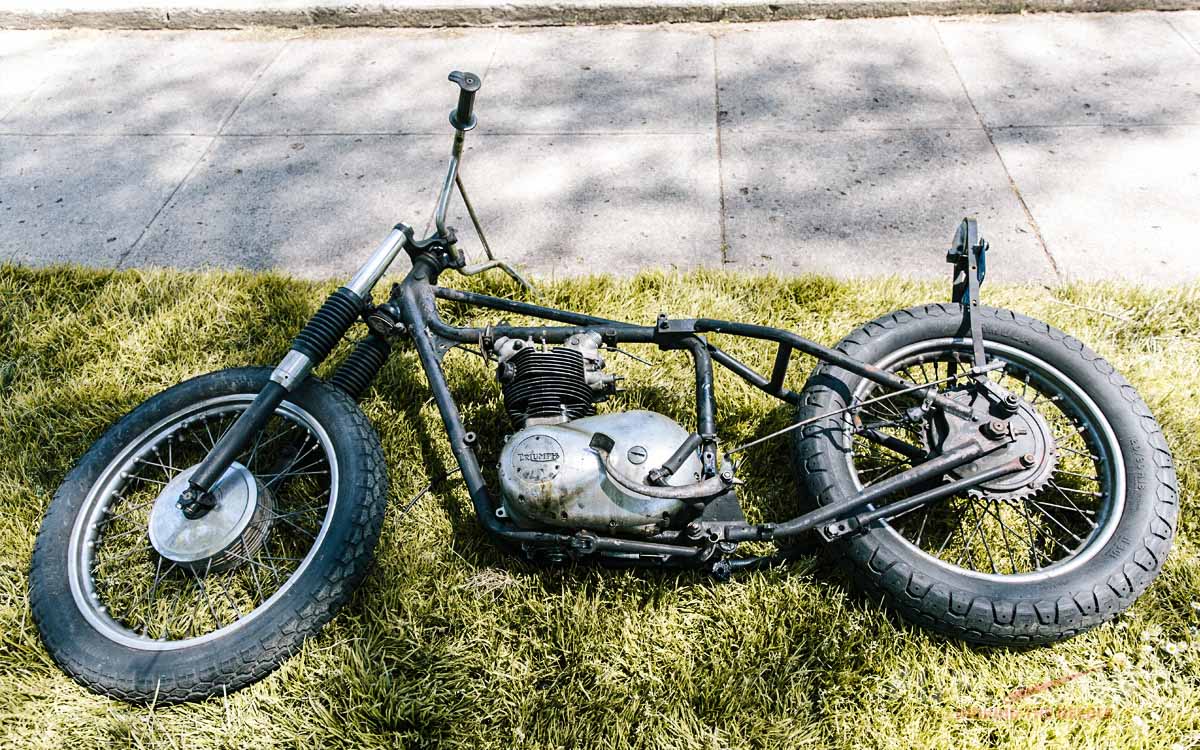

Soon thereafter, our friends Dan Paddock and Mike Dubniczki made their way over and jumped right in. The wheels were already off and the top triple tree setup was giving us some grief. We hit it with everything we had ranging from Vise-Grips and Liquid Wrench to a hockey stick-turned breaker bar (a Midwestern favorite). No luck. Not surprisingly, a quick trip to the neighborhood parts store yielded the perfect socket for the job, and the tree popped right off with ease.


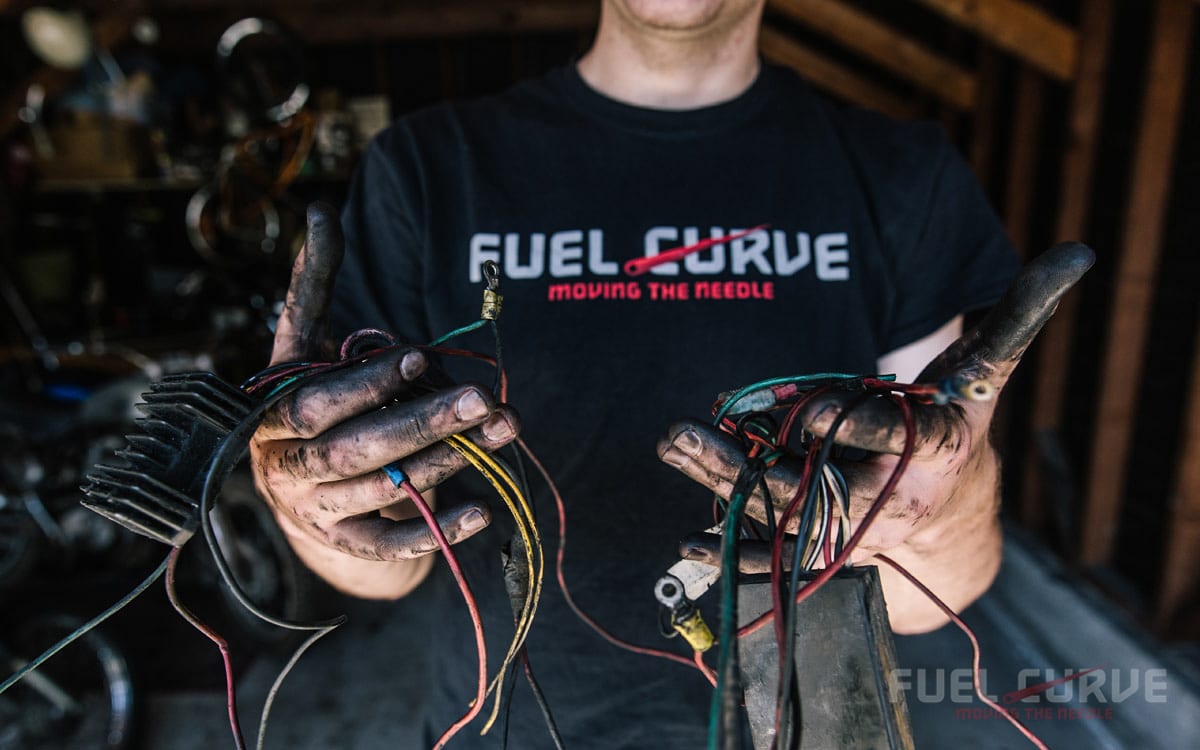
When it was all said and done, no two parts were bolted together (with the exception of the engine, of course). Sweaty and covered in grease, we stood back to admire our work. It’s hard to pinpoint exactly when all the pieces were put together, but I can only hope they’ll look even better when I get this old Triumph back on the road again.

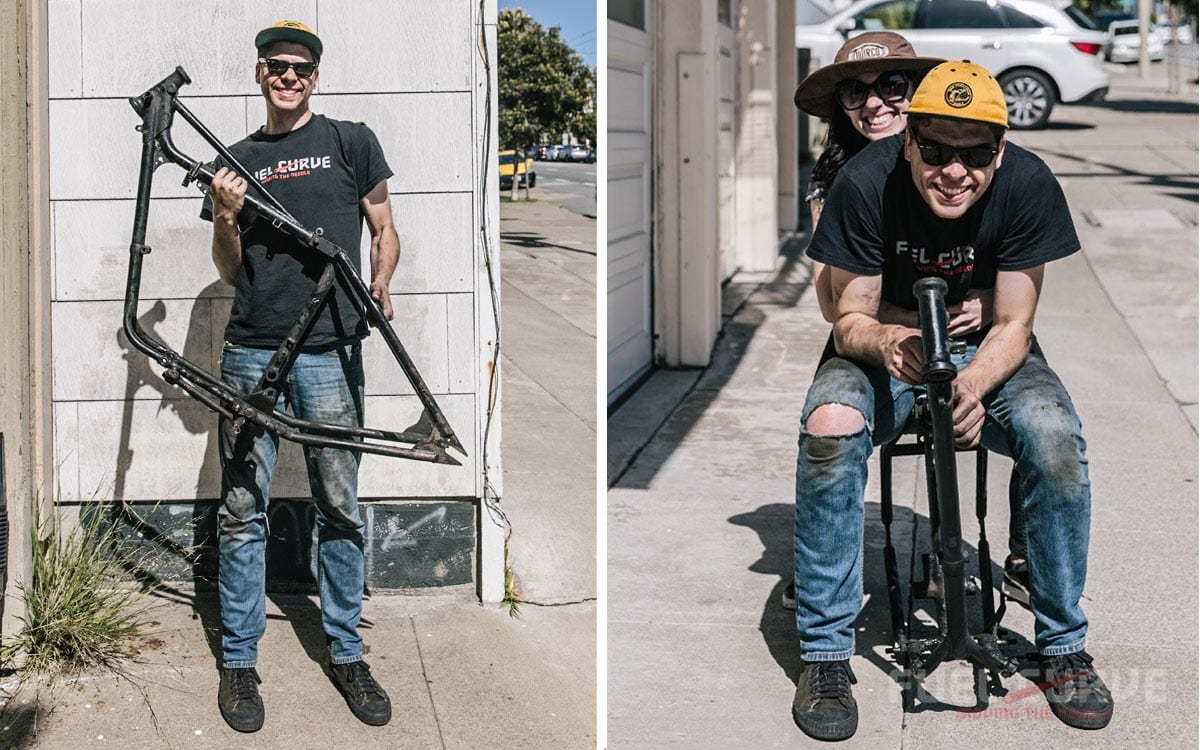
Epilogue
So what’s next for Spaghetti Western? A few weeks ago, I was seriously considering installing a fully chromed 10-over front end that I pulled from my parts pile (it sat in a Nor Cal storage locker for the better part of 50 years). I contemplated swapping the hardtail for a stock loop and a swing arm, but I figure this bike is the perfect platform to sharpen my fabrication skills. There are some welds to clean up, brackets to make and a whole lot of little things that need to be built or changed. I have plenty to do—and not enough time to do it—but I’m glad I got to kick things off with an unforgettable day of deconstruction. Stay tuned for more in the not-so-distant future.

